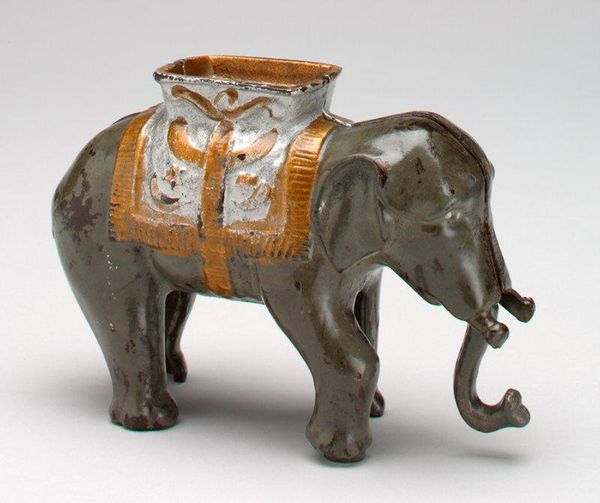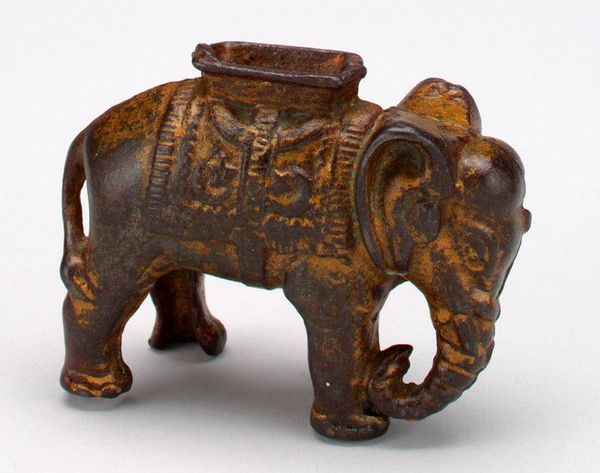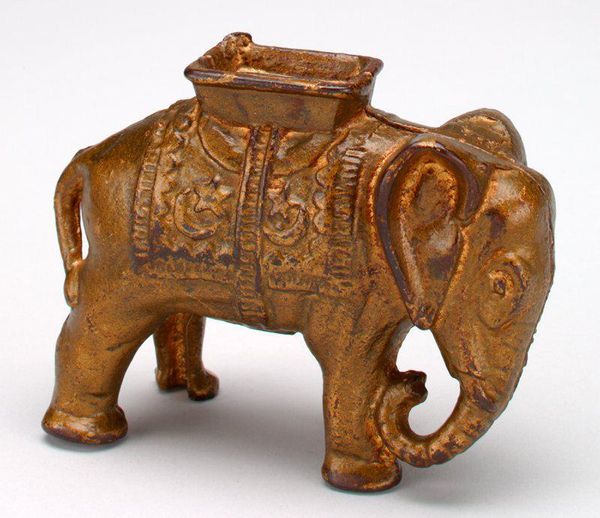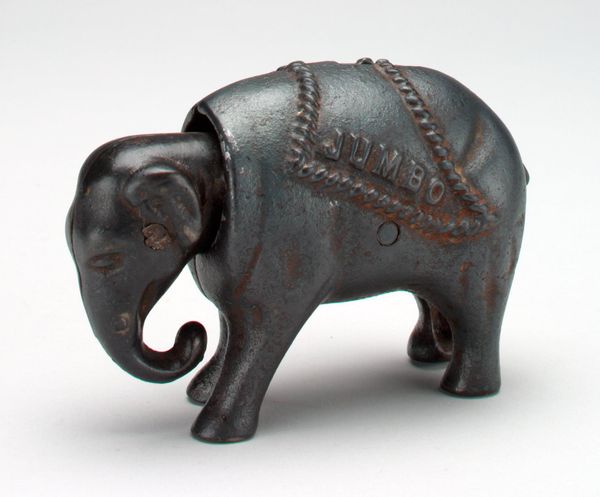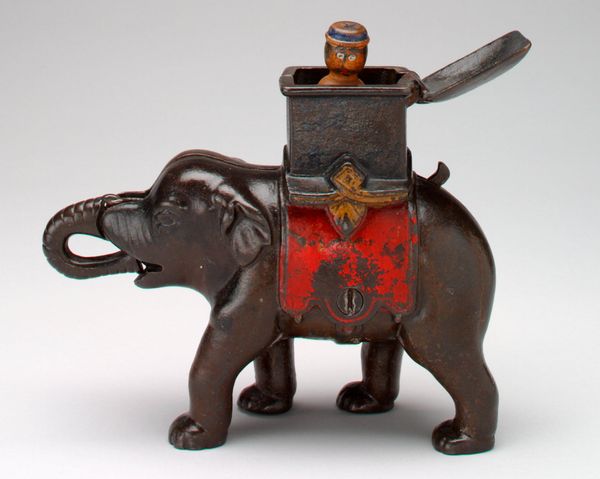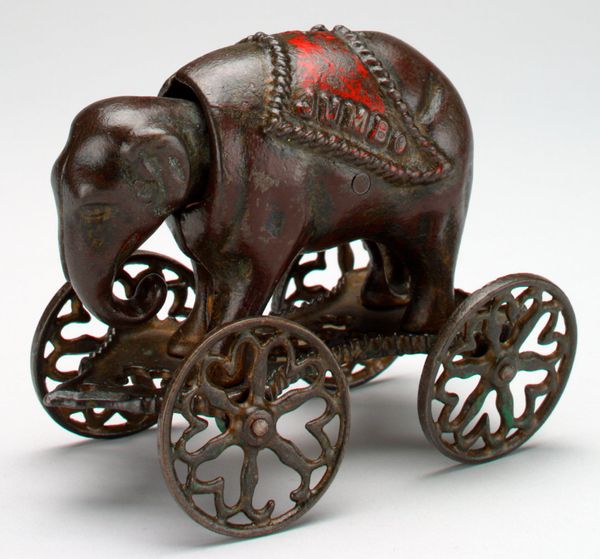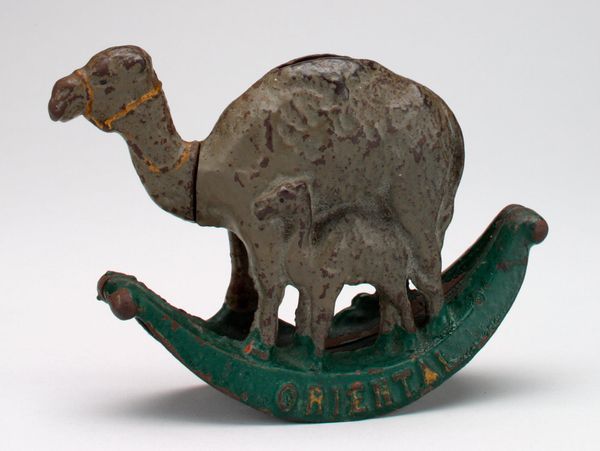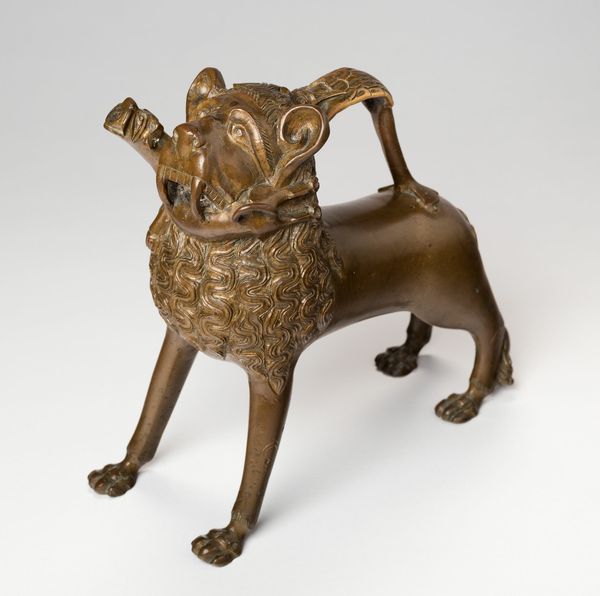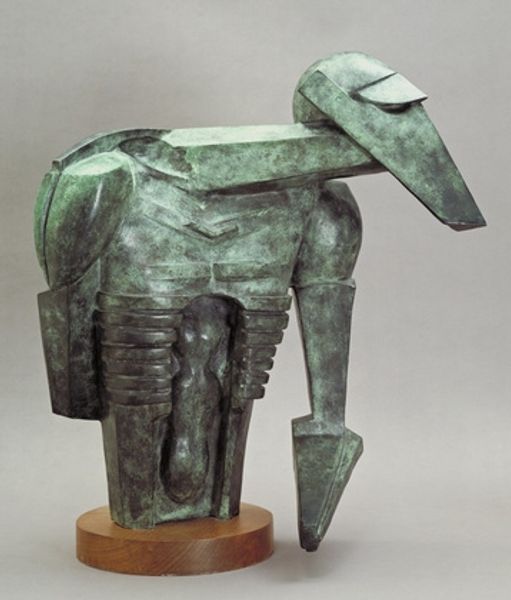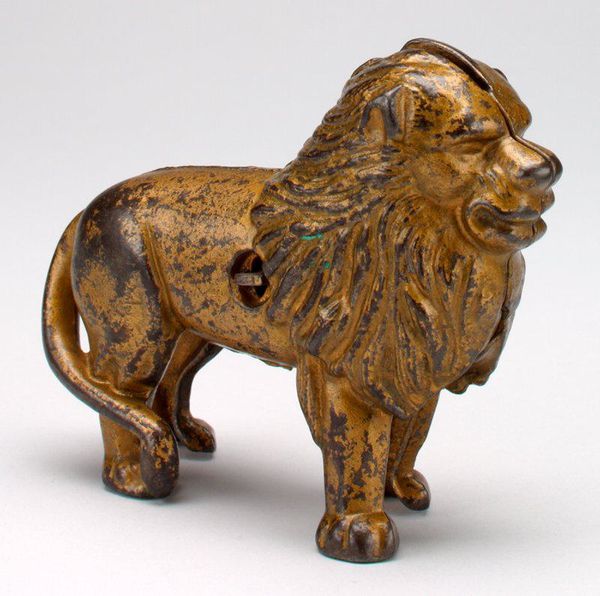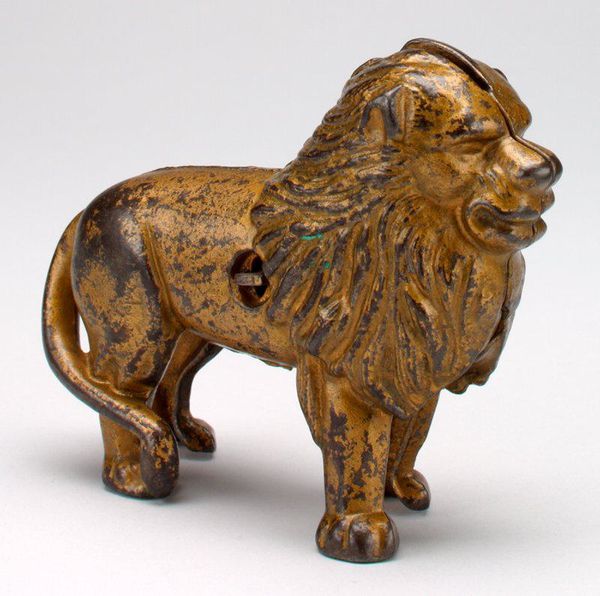
metal, sculpture
#
metal
#
sculpture
#
figuration
#
sculpture
#
decorative-art
Dimensions: 4 3/4 x 6 3/4 x 2 5/16 in. (12.07 x 17.15 x 5.87 cm)
Copyright: No Known Copyright
Curator: Here we have "Elephant Moves Trunk," a cast metal sculpture by the A.C. Williams Company, estimated to date between 1905 and 1934. What are your initial thoughts on encountering this little figure? Editor: There's a poignant quality to it, despite being a decorative piece. The muted colors and the suggestion of movement in the trunk lend it a feeling of melancholic grace. Curator: It is an intriguing blend, isn't it? The object itself served as a toy, yes, but as a figurative representation, what does the elephant symbolize, do you think? We might remember Ganesha as a potent deity, a symbol of wisdom and perseverance. Editor: Absolutely, we have to acknowledge the deeply rooted symbolism of the elephant. However, let's consider the period and the industrial context. It’s decorative art, potentially mass-produced. Isn't this elephant, stripped of its spiritual dimension, resignified as a kind of colonial trophy or commodity, divorced from its natural environment? Curator: That's a strong interpretation, connecting to broader historical dynamics. For me, there’s also something about the simplified forms and stylized saddle—it calls back to earlier eras of folk art, where images carry not just one meaning, but multiple cultural resonances simultaneously. Editor: And the fact that it’s cast in metal impacts my interpretation, especially considering our current environmental moment. There is an ironic dissonance between the enduring nature of the object and the vulnerability of real-life elephant populations facing habitat loss. Curator: An important observation. Looking closer, the scuffs and patina—they speak to the object's history. It has survived; it is still here with its powerful symbolic language speaking about complex topics we see from various lenses. Editor: It's a beautiful example of how a seemingly simple object can invite reflection on empire, endangerment, and our complicated relationship with nature. A small figure bearing heavy cultural weight, it also challenges our perception of how we understand time. Curator: Indeed. The object acts as a vessel for cultural memories, condensed into the contours of this stylized form. Editor: Ultimately, it embodies the powerful capacity of art to transform material reality into something brimming with social commentary. It's so evocative.
Comments
No comments
Be the first to comment and join the conversation on the ultimate creative platform.
